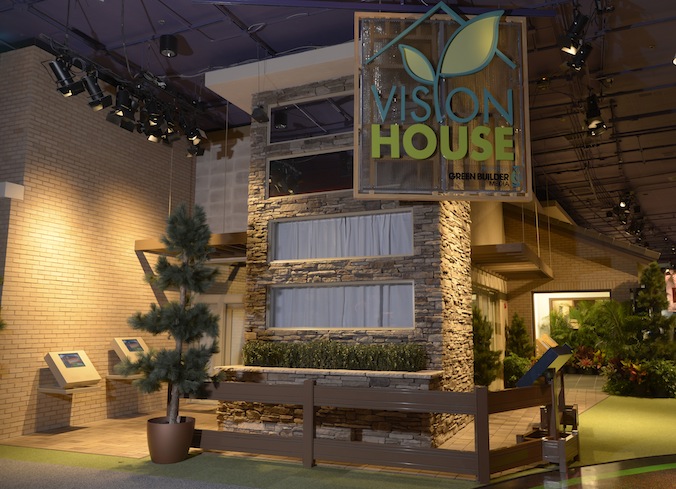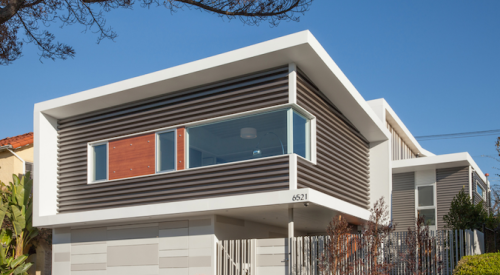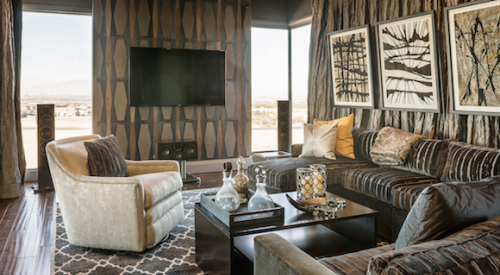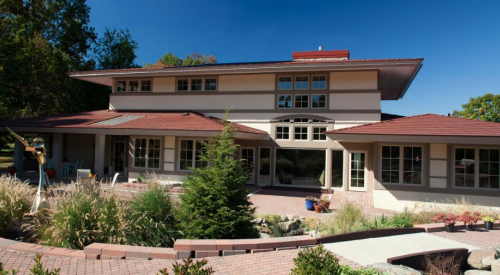The folks at Boral Bricks have known that brick is green for a long time. They’re demonstrating its attributes in three sustainable projects: the Proud Green Home; The Vision House in Innoventions at Epcot at Walt Disney World; and Zero Energy America.
Based in Roswell, Ga., Boral Bricks is the nation’s largest manufacturer and distributor of bricks and pavers. Shelley Ross, director of marketing, talked to Design Innovations about the company’s latest initiatives.
DI: Tell us about Boral’s involvement in the three demonstration projects.
Ross: Boral is a manufacturing sponsor of the Proud Green Home at Serenbe, a 1,000-acre community 30 miles southwest of Atlanta. The Proud Green Home aims to educate and inspire building professionals and consumers about sustainable, green, and high-performance home strategies and products. Construction is expected to be complete on or around Memorial Day weekend.

Photo courtesy of SmartBIM
Our brick is the primary exterior cladding material for this home. It will cover nearly 1,500 square feet of total wall surface. The same brick is being used in a large wall that will serve as a backdrop to a floating staircase inside the home.
The Vision House opened last April in honor of Earth Day and highlights major themes of sustainable innovation. It features a variety of eco-conscious Boral building materials, including BoralPure Smog Eating Roof Tile, Boral Bricks and Pavers, Boral Stone Products, and Boral TruExterior Trim.
Zero Energy America is a model-home community by Marc Rutenberg Homes, Tarpon Springs, Fla. There will be a total of four homes, two of which showcase Boral’s brick and roofing products. We’ve donated pavers as well as brick for exterior cladding and a few interior cladding areas where it highlights the fluidity in bringing the indoors and outdoors together comfortably. ZEA 1, the Castaway III model, was completed last November and ZEA 4, the Breakwater model, is expected to be completed this summer.

Photo courtesy of Marc Rutenberg Homes
DI: What message are you trying to convey with these exhibits?
Ross: Consumers already know that brick is a very durable, long-lasting material that doesn’t require much in the way of maintenance. And it doesn’t need to be replaced, so you’re saving a lot of labor and cost.
What may not be quite as well known is the way an exterior brick wall functions. There’s a 1-inch air space between the brick and the interior sheathing of the house. It ensures that any moisture that may have gotten through the exterior wall slides down the back of the brick and back out through the weepholes at the bottom of the wall. No moisture ever touches the interior sheathing.
When it’s 100 degrees outside and the sun is beating on the western façade, the brick heats up, but the 1-inch air space doesn’t conduct heat. The sheathing stays cool, so the interior of the house stays cooler. Similarly, when the temperatures plummet, brick will not conduct cold to the interior of the house. That’s called thermal mass, and you’ll only find it with products that have the width and solidity of brick.
DI: It sounds like brick is a great choice for homes in Florida.
Ross: It’s perfect for the Florida market because it doesn’t grow mold, it doesn’t rot, and termites can’t eat it. It performs very well in hurricane-type weather and stands up to wind-driven objects.
A side benefit of having brick exterior walls is that the home is much quieter. If you live in a neighborhood of small lots, you won’t hear your neighbor’s lawnmower or leaf blower.
DI: People may think of brick as a material that’s more appropriate for traditional styles of architecture, but that’s not the case with the Proud Green Home.
Ross: All three of these projects feature contemporary architecture with smooth, solid-colored brick. The Proud Green Home features a stacked bond where the brick is placed in vertical columns. Normally a running bond is used where the bricks are offset from row to row. The stacked bond creates a hip, cool, very contemporary look.
The other thing to keep in mind is that mortar is 20 percent of what you see when you look at a brick wall, so mortar color is very important to its appearance. For example, the Vision House has a dark gold brick with matching mortar that gives an even, monochromatic look to the wall. It was purposely done that way because the brick was being paired with stone. I’m sure you’ve seen some houses where, if you’ve got too much going on with the brick and the stone, your eyes can have quite a fight trying to figure out where to look.
DI: Have you noticed an increased use of brick in the new-home market?
Ross: It’s a little early to tell right now, but I can give you some anecdotal evidence. In Atlanta, our brick sales are up 50 percent over last year.
At the beginning of the housing downturn, sustainability was something everybody talked about and nobody knew quite how to implement. Now that the market is picking up, more builders have a plan for implementing sustainability and green building.
Brick is well-accepted as an aesthetic choice as well as a green one. If builders can combine the sustainability message with the curb appeal of brick, they’ve got a winner.
DI: What new products is Boral planning to introduce in the near future?
Ross: We have some new colors and textures coming into the market. But overall, the company is dedicated to making sure we manufacture our products in a very sustainable and ecologically friendly way.
For example, our newer plants are located close to mature landfills, and they siphon the methane gas that’s generated by all that rotting garbage. We clean up the gas, we pipe it in, and we operate the kilns in our factories with it. That way the gas is being burned cleanly and safely.
In our Salisbury (N.C.) and Augusta (Ga.) plants, we utilize sawdust both in the firing and in the body of the clay. The sawdust burns out of it, resulting in a lighter weight brick that ships a little more economically as well as ecologically. And we manage our network so that we’re shipping largely within a 100- to 200-mile radius.












